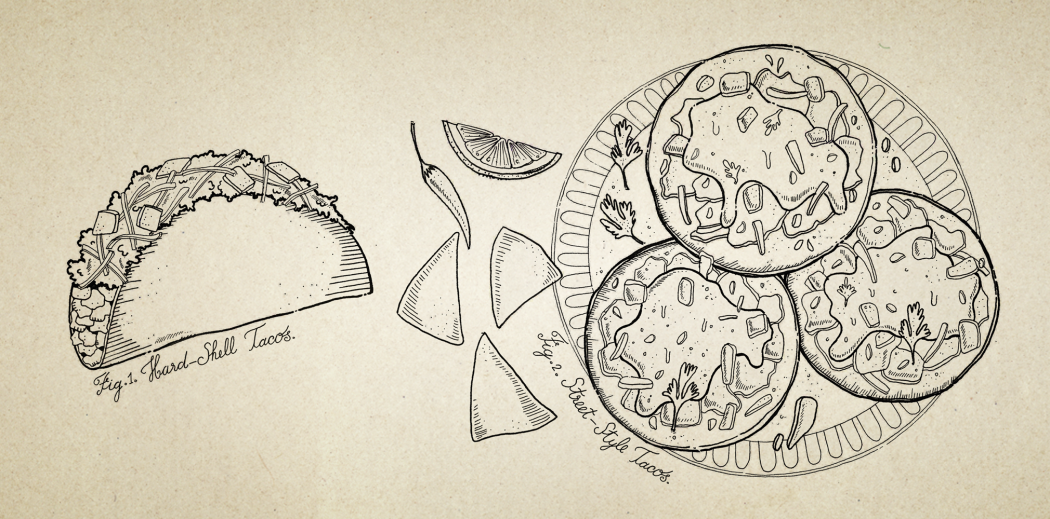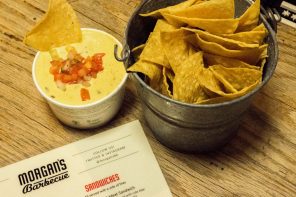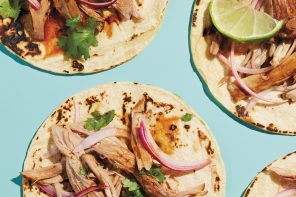In this month’s thebacklabel magazine we delved into the ways in which wine and tacos really aren’t so different. Here you will find one of these pieces, but to stay up-to-date be sure to sign up for your monthly subscription of Wine Awesomeness.
If you’re anything like me, you’re a product of the Americanized taco. In my home growing up, tacos were simple and yet amazingly tasty: a flour tortilla, ground beef (seasoned from a store-bought packet), tomatoes, lettuce, shredded cheese and sour cream. Oh and a hardshell taco was usually an option.
But if this taco I so fervently looked forward to in my family’s dinner line-up is “American,” then where can we find an “authentic” taco?
If only there were a simple answer.
The exact origin of the taco is largely unknown and far from easy to define. But we do have some clues. According to history professor and Mexican cuisine expert Jeffrey Pilcher, the word “taco” referred to a cloth plug used in early firearms in colonial Spain. Then, silver miners in 18th century Mexico used the term for their explosives – gunpowder rolled into pieces of paper. But these miners also packed lunches, and began calling their tortilla-wrapped food with hot sauce, tacos.
“People have been eating corn tortillas with bits of meat or beans rolled up inside for more than a millennium,” Jeffrey writes in his book Planet Taco: A Global History of Mexican Food.
The miners may have been the first to associate the word “taco” with the concept of tortilla-wrapped food, but most importantly they brought their tacos with them into Mexico City. Their convenient form of lunch took hold among people moving into the city with the rise of industrialization. Taco stands soon dotted street corners, and migrants brought their own cuisines – and forms of tacos.
Food wrapped in a tortilla is about as authentic as a taco gets. As with any cuisine, Mexican food has varied across regions and over time. As the taco spread across the country, the north saw the rise of Carne Asada (beef) while the south became home to Carnitas (pork).
By the time the taco arrived in the United States, it possessed a lineage spanning from Tijuana to Cancún. As immigration to the US picked up in the beginning of the 20th century, so too did the presence of tacos – but it wasn’t long before those tacos started to taste and look different.
Many changes came out of the nature of the US food industry. These new tacos were aided by a Texan’s earlier invention of chili powder, and were influenced by readily available food in the US like iceberg lettuce and cheddar cheese.
And of course, a big change came with the hard-shell.
While he was not the only one responsible for bringing the fried U-shaped tortilla shell to fame, Taco Bell founder John Bell certainly helped speed things along. With his “creation” and subsequent chain, the taco began to spread through the country.
This hard-shell brought the food into towns and homes across the US, where it transformed once again into what many Americans – myself included – recognized as taco night at home.
And now, many of us, in whatever type of cuisine it may be – Mexican, Italian, Thai – search for what is “authentic” here in the US. And we abhor the thought of this hard-shell being anything close.
But today, a taco doesn’t have just one look, one taste or come from one place.
It’s in the homes, kitchens and stories of people who eat, buy and continue to make, change or improve the dish that each of their families called the “taco.”








